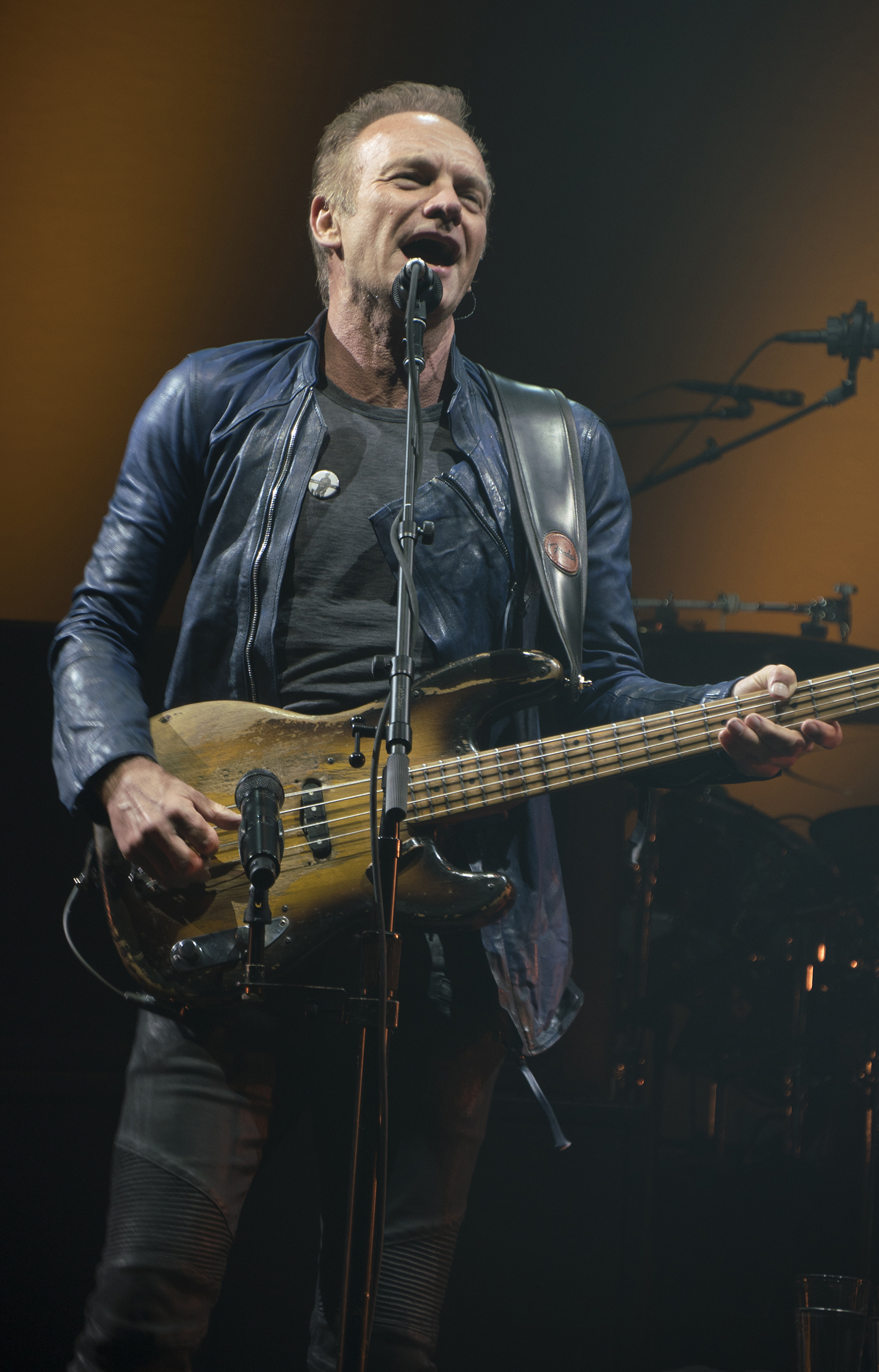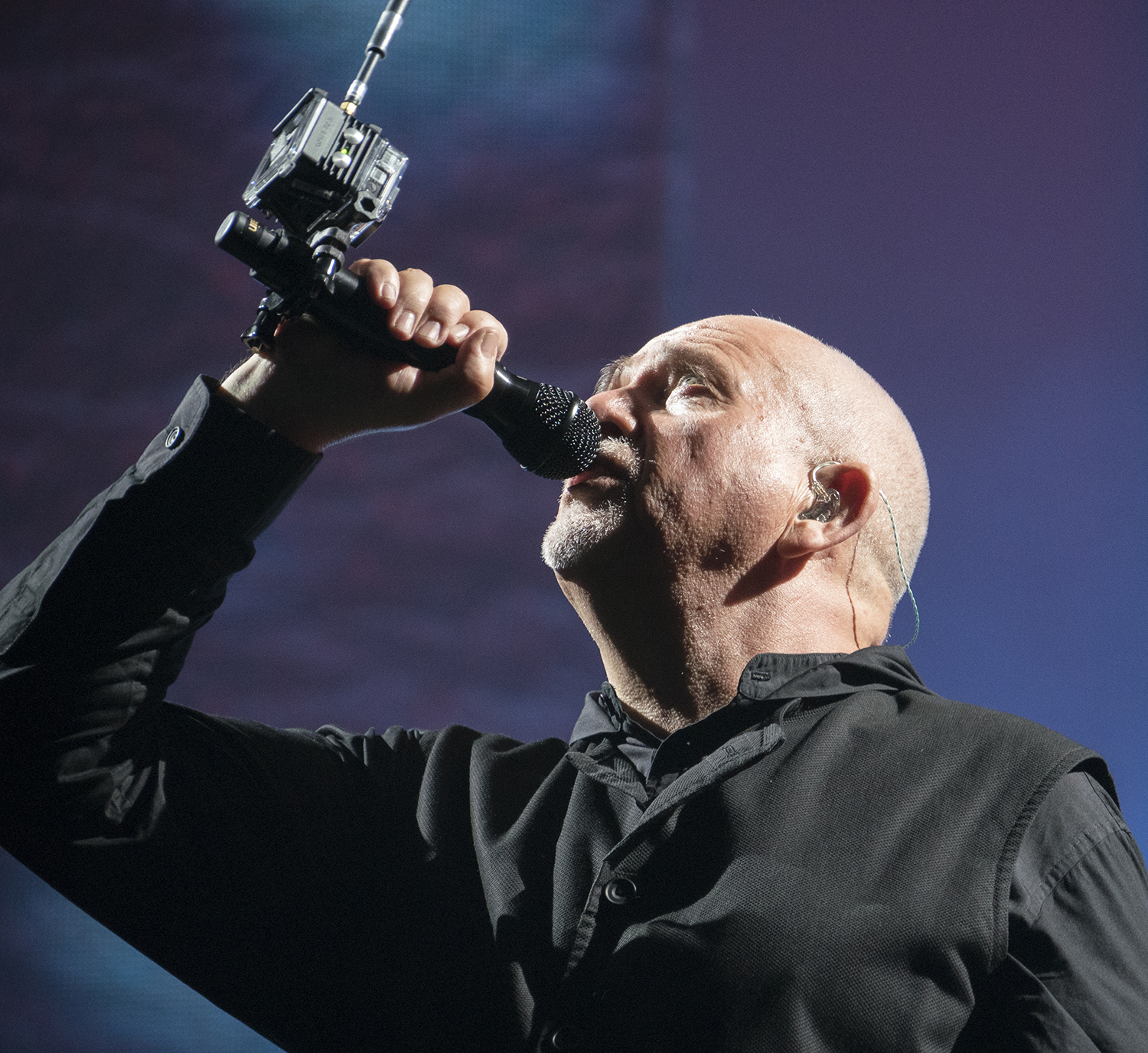Shooting Peter Gabriel and Sting with the Sony a7rii
 Sting at DCU Center in Worcester, Massachusetts July 2, 2016.
Sting at DCU Center in Worcester, Massachusetts July 2, 2016.Sony has been embarking on an end-around against Canon and Nikon by innovating hard in the mirrorless market. Their flagship a7rii is an amazing, full-frame 42.4M-pixel camera capable of 4K video. Without the need for a mirror, the camera is much smaller than its DSLR counter-parts, ideal for a wide variety of situations, particularly concerts. Many venues ban DSLRs, but these smaller cameras are allowed in, as was the case with the Peter Gabriel-Sting “Rock Paper Scissors” concert at the DCU Center in Worcester, MA on July 2, 2016.
I brought a single lens – the Sony 18-200mm, f/3.5 to 6.3 (the kit lens from my Sony FS-700 video camera) – to see how well the Sony a7rii performed, and to get used to using the camera. My experience with mirrorless camera systems has been limited to the “pocket” cameras from Canon and Nikon. These cameras have always been frustrating for me to use, particularly with the delay between hitting the shutter and the camera actually taking the picture or the automatic focusing systems getting lost. So, I was very interested to use a “professional” mirrorless.
Lots to Learn
Before going to the concert I studied the manual, watched several YouTube tutorials, and read several blogs (I liked this one in particular) on how to set up the Sony a7rii. Make no mistake. This is a complicated camera. It’s not completely intuitive how to take advantage of the combination of modes to get the most out of the camera. It takes time and some experimentation.
The most surprising thing about the camera was a feature that I was looking forward to the most – the built-in EVF (Electric ViewFinder). Since there isn’t a mirror, Sony provides a small video display in the view finder to look “through” the camera. It’s a great feature because in bright sunlight the back LCD panels usually get washed out making it difficult to critically assess things like exposure and focus. Using a view finder eliminates this completely, however, what I wasn’t prepared for was that I missed the optical viewfinder of a DSLR. I’m not sure why this bothered me because I’m used to viewing everything on a video camera through an EVF or LCD screen, but it did.
Disabled Quick Preview
I turned off the preview function – that is, being able to review the image that was just taken for 2 seconds (or more) – because I want to continue to watch the live action and take another shot. This has a peculiar side effect in the Sony a7rii in that after the shutter has been pushed, the EVF quickly loses focus and then snaps back. During the concert I seriously wasn’t sure if my shots were in or out of focus as I took them. Very disconcerting. I’m not sure why this happens.
 Peter Gabriel at DCU Center in Worcester, Massachusetts July 2, 2016.
Peter Gabriel at DCU Center in Worcester, Massachusetts July 2, 2016.Back Focusing
I’m a big fan of “back focusing.” This is where you re-assign the focus function to a button on the back of the camera so it operates independently of the shutter release button. The Sony a7rii indeed allows this, but the most conveniently located button for this is the AF/MF or AEL button, but this button is very difficult to find by feel because it is recessed. During real-world use I was frustrated often and needed to pull the camera away from my eye to find the button. I’m hoping over time I will “learn” how to find it reliably.
Set Minimum Shutter Speed
The Sony a7rii has a wonderful mode that I used for the concert – assigning a minimum shutter speed even when you are in aperture-preferred mode. I like setting the aperture to minimum, but with my Nikon DSLR, you set the ISO and let the camera determine the shutter speed. The camera will dip the shutter speed down to get the proper exposure. The problem is that anything below 1/60th will result in blurry photos – either by hand shake or the subject moving. Sony’s solution is brilliant. I set the minimum shutter speed to 1/125th and let it change the ISO to get the right exposure. I was very happy with the results with this mode.
Real 4K Video – WOW
Taking video was quite amazing.
Not only was the resulting 4K video quite stunning to view on a 4K display, but the 5-axis image stabilization was beautiful. As you can see in this clip (be sure to watch it in 4K!), I could hold the camera rock steady by hand even at 200mm. This is a very impressive feature of the Sony a7rii. The auto-focus was actually very good, staying locked on even while I zoomed in and out, however, it started to suffer during the last part of “Message in a Bottle.”
The Future
I will be very interested to see how the camera performs for sports photography – a very demanding application for focus-assist due to the fast movement of the subjects.





Some nice shots of two of my favourite singer-songwriters. Video is also impressive, considering it was shot hand-held from the audience. Makes me want to see the whole concert.
Thanks for the kind words, Tony. Appreciate you stopping by to see the pictures. I expected Peter Gabriel to deliver (I’ve seen him twice before), but Sting really stood out. His voice was in great shape, and he knows how to rock out and get the crowd going. A very enjoyable show.
These are lovely photos! We saw this tour on their 2nd date, at the Verizon Center in Washington, DC, and your photos are amazing mementos for our show, too.
Thank you so much for the kind words. Glad you liked the photos!